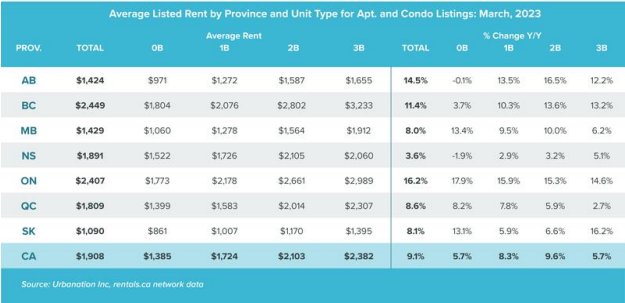Market Update for March 24

The research analyzed vacancy rate data released in January by the Canada Mortgage and Housing Corporation (CMHC). Canada’s vacancy rate fell to 1.9 percent in 2022, its lowest point in 21 years, from 3.4 per cent in 2020 and 2021. Competition for units also drove the highest annual increase in rent growth on record, by 5.6 per cent for a two-bedroom unit.

Canada’s rental housing stock grew by 2.4 per cent in 2022, led by Calgary at 7.4 per cent and Ottawa-Gatineau at 5.5 per cent, while Toronto and Montreal saw the smallest percentage increases at 2.1 per cent and 1.4 per cent, respectively. “We haven’t seen that many additions to the purpose-built inventory in almost a decade, so you would think that added supply of units would ease some of the competition, but what the CMHC rental market data revealed to us was that it didn’t,” said RBC economist Rachel Battaglia.
Slow growth in Canada’s two most populous cities has been outpaced by rapidly increasing demand, partly fueled by high immigration levels, she said. Annual federal immigration targets are set to grow eight per cent by 2025, meaning demand is unlikely to let up. Battaglia also pointed to affordability and behavioral preferences for the influx of rentals sought. She said more Canadians are choosing to live alone, meaning fewer incomes per household.
“You have a lot of people being funneled into the rental market who maybe would have liked to own something but it’s just not financially in the books for them right now,” said Battaglia.
The report estimated an existing deficit of 25,000 to 30,000 units of rental stock across Canada. In addition to building more supply, it recommended turning condo units into rentals, converting commercial buildings and adding rental suites to existing homes to help ease the pressure.